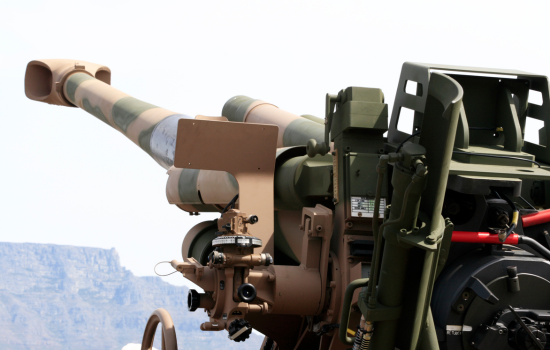Terror as a Strategy of Psychological Warfare
The modern terrorist differs from the common criminal in that he is motivated by a political agenda. The actions of the terrorist—murder, sabotage, blackmail—may be identical to those of the common criminal. However, for the terrorist, these are all means to achieve wider goals, whether ideological, religious, social or economic. The way to the terrorist’s ultimate political goal runs through a vital interim objective—the creation of an unremitting paralyzing sensation of fear in the target community. Thus, modern terrorism is a means of instilling in every individual the feeling that the next terror attack may have his name on it. Terrorism works to undermine the sense of security and to disrupt everyday life so as to harm the target country’s ability to function. The goal of this strategy is, in turn, to drive public opinion to pressure decision-makers to surrender to the terrorists’ demands. Thus the target population becomes a tool in the hands of the terrorist in advancing the political agenda in the name of which the terrorism is perpetrated.
Terrorists are not necessarily interested in the deaths of three, or thirty—or even of three thousand—people. Rather, they allow the imagination of the target population to do their work for them. In fact, it is conceivable that the terrorists could attain their aims without carrying out a single attack; the desired panic could be produced by the continuous broadcast of threats and declarations—by radio and TV interviews, videos and all the familiar methods of psychological warfare.
Modern terrorism, in defiance of the norms and laws of combat, focuses its attacks on civilians, thus turning the home front into the frontline. The civilian population is not only an easy target for the terrorist, but also an effective one; the randomness of the attack contributes to the general anxiety. The message is: anyone, anywhere, at any time, may be the target of the next attack. This threat undermines the ability of the civilian population to live a normal life. When every action must involve planning for how to survive a potential terror attack at a random time and place, the daily routine becomes fraught with anxiety.
A “conventional” terror attack usually has a fairly limited physical effect. Its effectiveness lies in its ability to get the terrorists’ message across. These messages are intended for three different audiences. To the terrorist organization’s supporters, and the population which it purports to serve, the message is: “We have succeeded. We have neutralized the power of the enemy and hit them at their most sensitive point.” The attack thus serves to strengthen this public’s support of the terror organization, to encourage enlistment to their ranks and, in general, to raise the morale of this community.
To the community targeted by the terror attack, the opposite message is sent: Despite all your defenses—your army, your policy force, your military hardware—you are never safe from us. Once civilians feel unsafe in their own homes and workplaces, daily life is disrupted, causing considerable harm to personal and national morale. The message is: until you accede to our demands, you will not be safe.
At the same time, the terror attacks sends still a third message to international public opinion. To the rest of the world, the terrorists present the attack as an example of their determination to achieve their political aims by any means and at any cost. The terror attack is intended to draw the attention of international public opinion to the conflict and the terrorists’ demands. A more sinister message is concealed in this show of determination: “You, the countries uninvolved in the conflict, must put pressure on our enemies to give us what we want. Otherwise you might be next.”
Classifying fear
The terrorists’ primary aim is to create fear within the target population, with the intention that this fear is translated into pressure on the government to accede to the terrorists’ demands in order to stave off further terror attacks. The success of this strategy is dependent on the degree to which the fear of attack can be magnified out of all proportion to the actual danger. The fear engendered in a population living in the shadow of terrorism has two components—a rational component and an irrational component. The rational fear is simply a product of the possibility of meeting a violent death as a result of a terror attack, with the degree of anxiety being proportional to the actual likelihood of the event occurring. In a society experiencing a large number of attacks, such anxiety is natural. However, there is also a more insidious element—an “irrational” anxiety—a fear that bears no relation to the actual statistical probability of ones being killed or injured in a terror attack, or even of a terror attack taking place at all.
It is this irrational anxiety that is the interim goal of the terrorist organization, and the means by which it exerts pressure on the target population. By magnifying the threat—making it seem that violent death lies around every corner—the terrorists hope to amplify the victim’s anxiety to the point where he looses a sense of proportion. Terrorism is psychological warfare pure and simple. It aims to isolate the individual from the group, to break up a society into so many frightened individuals, hiding in their homes and unable to go about their daily lives as citizens, employees, and family members. Further the terrorist aims to undermine the individual’s belief in the collective values of his society, by amplifying the potential threat to the extent that security appears to outweigh all other political concerns. Terrorism uses the victim’s own imagination against him.
Terrorist use of psychological manipulation
Modern terror organizations invest much time and effort, as well as extensive resources into methods of psychological warfare. They carefully observer their target population to find weaknesses and cracks in the society which can be widened or exploited. The terrorists study the target country’s media to learn how best to get their threats across and how to magnify the fears of the population and stimulate or amplify criticism of the government and its policies. Dissenting views in the society are carefully collected and used to undermine the population’s beliefs in the rightness of its own ways. The terror organization knows from the outset that it will not achieve its goals purely by means of terror attacks. It must enlist the help of its victims themselves in gaining its objectives. A victory that would be impossible by military means is thus brought within reach through a protracted, gnawing campaign of psychological warfare—a war of attrition that gradually erodes the target population’s will to fight and turns the tables against the stronger power.
Personalizing the attack
One of the most telling examples of such a policy in action is the effect that a terror attack has on members of the target population not directly hit by the attack. This influence— the “personalization of the attack”—can be seen immediately after a terror attack on a busy street or crowded shopping center. The immediate reaction of most people upon hearing of the attack is: “I was there only last week!” or “my wife works on the next block,” or “my aunt lives just down the street.” People have a natural tendency to seek a personal connection to events—a tendency of which the terrorist organization is well aware. By such “personalizing” of terror attacks, the effect on the target population is made to extend beyond the immediate victims to include people who weren’t even in the area at the time of the attack. The message conveyed—even though totally unfounded—is nevertheless highly dangerous. Members of the target population come to believe that only by a coincidence were they or someone dear to them, saved from harm, and that such a coincidence cannot be counted upon next time.
Of course, statistically these fears have no connection to reality. The likelihood of being harmed in a terror attack is fless than the likelihood of being harmed in a traffic accident or even an accident in the home or workplace. In fact, the chances of dying of serious illness are much greater than the chances of being even lightly injured in a terror attack. Nonetheless, by using psychological manipulation, the terrorists succeed in creating disproportionate anxiety in relation to the actual threat—a kind of irrational panic. While the physical damage caused by terrorism may be statistically less than that of traffic accidents or other mishaps, the atmosphere created by a terrorist act casts a greatly magnified shadow over society, far in excess of its statistical risk to the individual.
Terrorists’ use of the media
Governments and policies have foundered under the influence of terrorism. The ability of a small group of individuals to manipulate public opinion, and thus the highest policies of the land, is what makes terrorism a strategic threat to Israel and other democratic societies.
An example of terrorist organizations’ understanding of the psychological ramifications of its deeds can be seen in the way in which the Hamas organization uses the media in Israel. After any Israeli military operation against the organization, Hamas spokesman can be counted on to declare via the news media that, because of this operation, Hamas will now carry out a series of attacks in retaliation. “Our organization has ten suicide bombers standing by to retaliate,” the spokesman declares in ominous tones. But what is the real significance of such threats? Does he mean that had the military not acted against the organization, all Hamas terrorism would cease? And when he speaks of ten suicide bombings, does this mean ten attacks in the next few hours, or the next week, or the next three years? And after these ten attacks, will the organization suddenly cease attacks, or will it merely use a different excuse for the eleventh attack.
Despite the threat’s lack of significance, it serves to arouse anxiety during the calm periods between attacks. What’s more, it plays on the fears of the target population, which, after the first attack will be inclined to think to itself, “Oh no! There are still nine more attacks like this to come!”
Sometimes the terror organizations will exploit fears raised by a successful attack, upon learning that the attack had some special, and unintended, significance to the target population. Most of the victims of the June 2001 bombing at Tel-Aviv’s Dolphinarium discotheque were teenaged new immigrants from Russia. Upon learning of this, Hamas attempted to exploit the fears of new immigrants by claiming that the attack was intended from the start to target this particular group and that henceforth, they would focus their attacks on new immigrants. Their aim was clear: to create panic within the new immigrant population, and thereby harm immigration to Israel and to encourage emigration out of Israel.
Toward a comprehensive counter-terrorism policy
Decision-makers and security personnel in countries affected by terrorism, not to mention as members of the media, often appear to be woefully ignorant of the psychological manipulations used by terrorist organizations. These people all too often play into the hands of the terrorists, helping to increase the effectiveness of the terrorists’ psychological campaign. The media often grants the terrorists a platform to publicize their views and psychological manipulations, not on by the coverage of the attack itself, but also in airing interviews with terrorists themselves and videotapes made by them. Decision-makers publicly make reference to baseless threats made by the terrorists, thus granting them a credibility that they would not otherwise have. All of this naturally increases the public’s anxiety. In addition, security personnel sometimes choose to publish vague intelligence warnings of impending attacks, even where such publicity does not add to public security. This increases the level of anxiety and contributes to a feeling of insecurity and confusion amongst the public, who have no idea how to act in the light of these warnings.
Those tasked with dealing with terrorism must examine their methods of coping from the point of view of terrorism’s psychological effect, and not just with a view to countering the physical threat. Otherwise they risk winning the battle—succeeding in detecting and foiling a specific attack—while losing the war. When terrorism succeeds in creating such anxiety within a society that daily life becomes impossible, then that society has lost the war against terrorism.
The population that must live under the threat of terrorism can, and is entitled to, receive aid and instruction to enable it to reduce the “irrational” anxiety caused by terrorism. It is the responsibility of the State to provide its citizens with the tools and information necessary to counter the terrorist’s manipulation. And this can only be done through education, arming the population with knowledge in order to prevent the strategic damage of modern terrorism. This must be based on comprehensive research on the goals of the terrorists and the psychological manipulations used by them to achieve these goals. On the basis of this information, tools can be developed to neutralize these manipulations.
The target community must be taught to view media coverage of terrorist attacks with a critical eye, to avoid falling for terrorist manipulation. Individuals must be taught to recognize the moment when the manner in which they relate to terrorism changed—the instant when “rational” fear became “irrational” anxiety. At this stage, the instruction should give the individual psychological tools to enable him to lower the level of his personal “irrational” anxiety on his own. As a rule, members of a targeted population mush constantly ask themselves: how do the terrorists expect me to behave in the light of their attacks? Am I willing to play the part that they have assigned to me in their terrorism strategy?
The role of the media
The media need not be a tool in the hands of the terrorist organization. On the contrary, it can play a crucial role in neutralizing the psychological damage of terrorism. In a democratic society, the media’s role is to provide reliable information in real time. However, they must be wary of their natural tendency to amplify the horror of a terror attack, and thus serve as a platform for the terrorists. The media should avoid taking close-ups whilst a terror attack is taking place and they should downplay expressions of extreme fear and panic in the heat of the moment. Above all, they should avoid broadcasting tapes made by terror organizations and interviews with individual terrorists.
In a democratic society there is no place for censorship, even on such a problematic and sensitive issue. However, even though the journalist must remain professional, he must also be aware of his responsibility as a member of his society, and avoid being used as a tool by the terrorists to attain their political aims.
The role of the government
Psychological victory and the ensuing changes in public policy are the primary strategic goals of terrorist groups. This manipulation of governments through public opinion is especially dangerous to democracies. Thus, the decision-makers and politicians have a responsibility to their constituencies to help neutralize the effects of terrorist manipulation. Among other things, decision-makers can help by allocating the necessary funds for educational and instructional activities within the target community. In addition, they must be careful not to intensify the fear of terror attacks, by using the attacks as a tool in inter-party political struggles.
Above all, decision-makers must recognize the strategic psychological damage which could be caused by a policy of counter terrorism that does not take into account the physiological influence of terror attacks—on the morale of the nation’s citizens, as well as on the terrorist groups supporters and activists.
A terror attack is not an end in itself, but only a means to an end. Those faced with countering terrorism mhave at least as thorough an understanding of the terrorists and their methods as the terrorist has of his target society. Often, the knowledge that one is being manipulated—and how this is being done—is itself a powerful weapon for countering such manipulation.






